Also known as Grilled Yellowtail Collar, Hamachi Kama is a flavorful broiled fish that you will find on menus throughout Japan. You just need four ingredients and 15 minutes to make this traditional rustic dish.
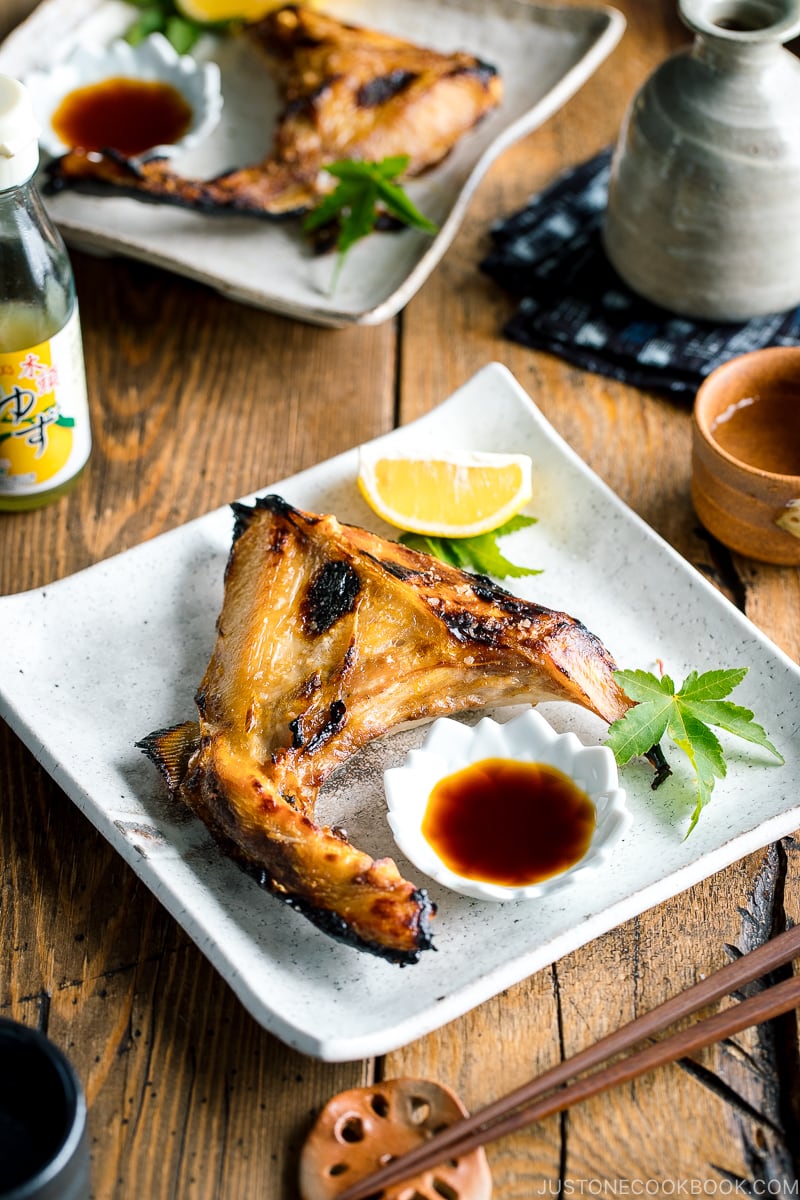
Of all the types of fish we eat in Japan, Hamachi (魬, はまち, ハマチ) is a favorite among home cooks and professional chefs alike. If you go to a Japanese sushi restaurant, you will most likely find Negihama Maki, or Yellowtail Scallion Roll, offered as a type of maki sushi. Yellowtail is another name for Hamachi.
This is a fish I always have on hand (fresh or frozen) because it takes no time to prepare (20 minutes), and I can make miso soup or quick side dishes at the same time. I promise the flavor of this fish, and the easy cooking method, will make it a favorite in your home, too!
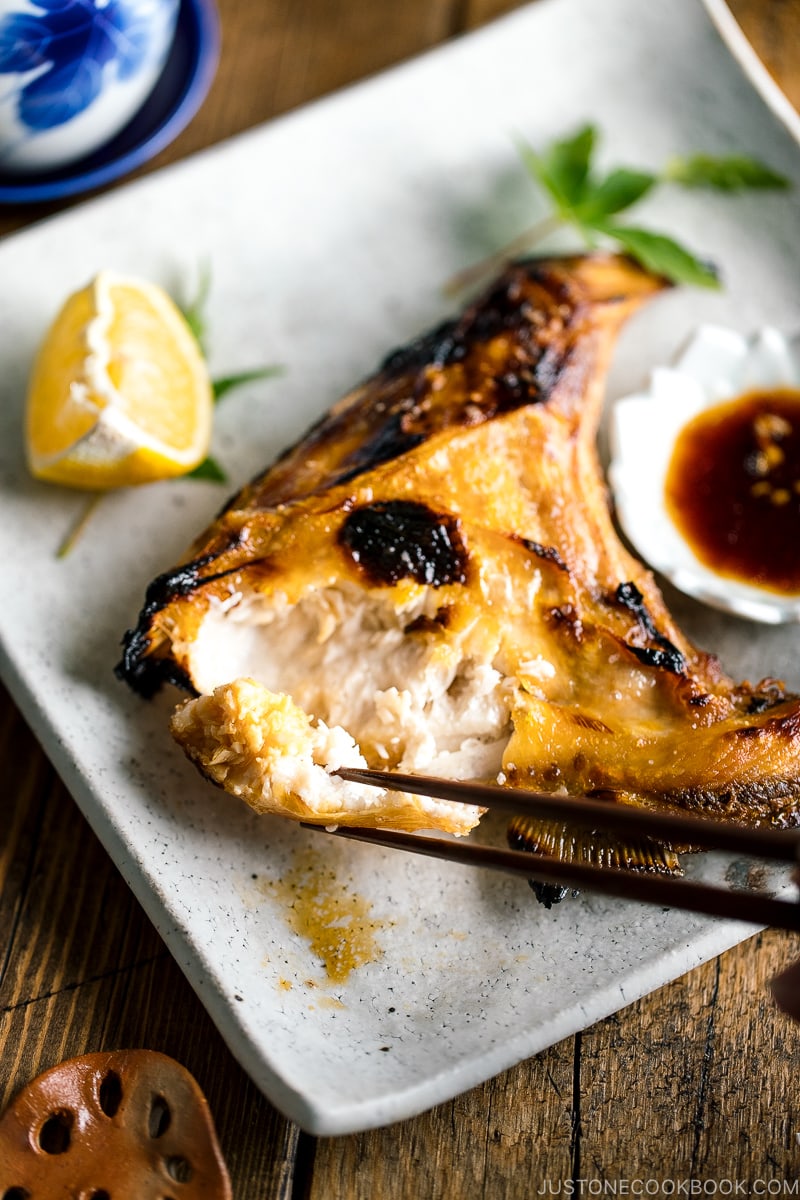
What is Hamachi Kama?
Hamachi Kama (はまちのカマ) is the collar of the yellowtail located just above the gills and below the head. It is the fattiest part of the fish, making it naturally juicy, and there are two located in each yellowtail (one per side). Typically, Hamachi is grilled or broiled until the skin is crisp and the inside is just cooked through. You can easily scrape the flesh off the cartilage with chopsticks.
What Is the Difference Between Hamachi and Yellowtail?
There are several names for this fish—Hamachi, Buri, Yellowtail, or Japanese Amberjack—depending on where you are. What’s the difference? It all comes down to the age and size of the fish, and different regions of Japan will also name the fish based on the way it was caught (farmed vs. wild-caught). No matter what name you see on the menu, the raw fish should have pale pink flesh with a stripe of deep red coloring.
What Does Hamachi Kama Taste Like?
The flavor of the yellowtail collar is subtle and “clean.” The juicy texture of the meat can be compared to mackerel, but the taste is much milder. If you’ve tried fresh hamachi sashimi, you know the flavor is delicate, rich, and slightly sweet. It pairs beautifully with citrus, which you’ll see in my recipe below.
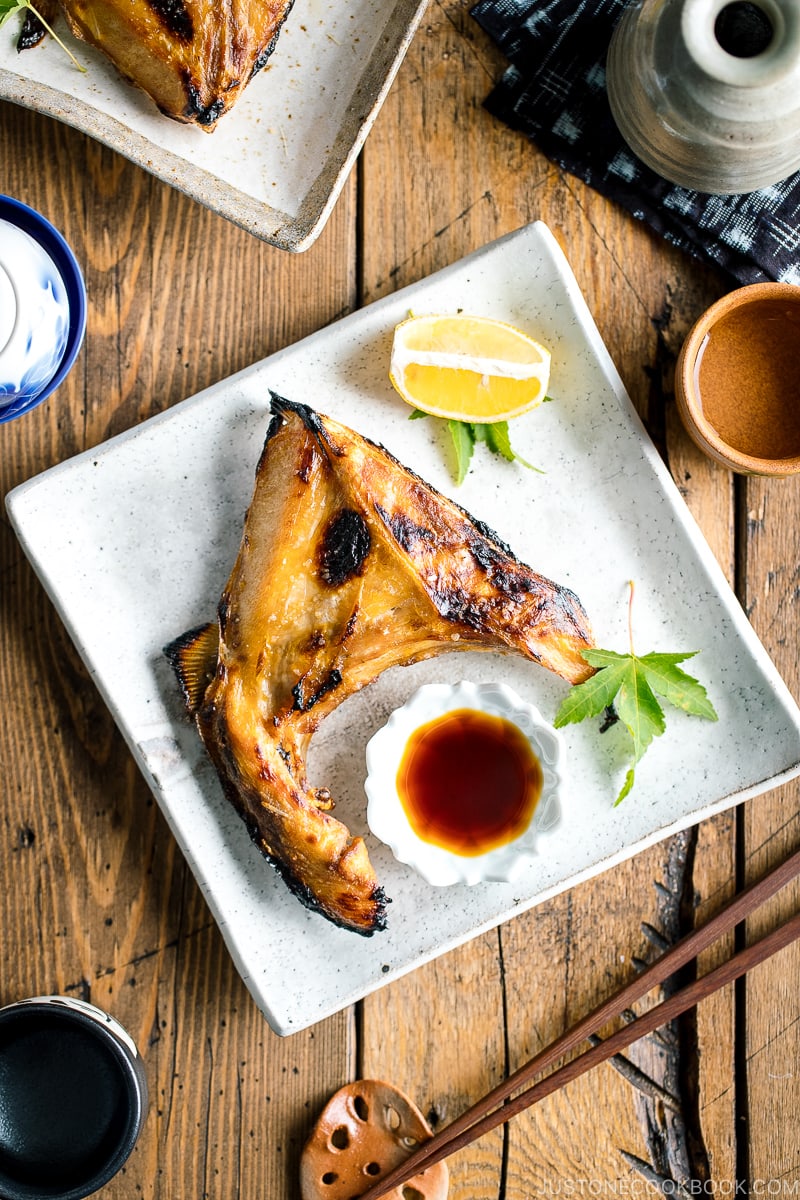
Health Benefits of Hamachi/Yellowtail
Hamachi, or yellowtail, offers a number of nutritional benefits. Because it is a naturally oily fish, it is high in omega-3 fatty acids (like salmon), which are important for brain and heart health. This fish is also particularly high in vitamin A, vitamin D, and calcium. Like all seafood/meat, it’s important to buy good quality (it makes a difference in the flavor, too!), and only consume raw hamachi if you know it is “sashimi quality.”
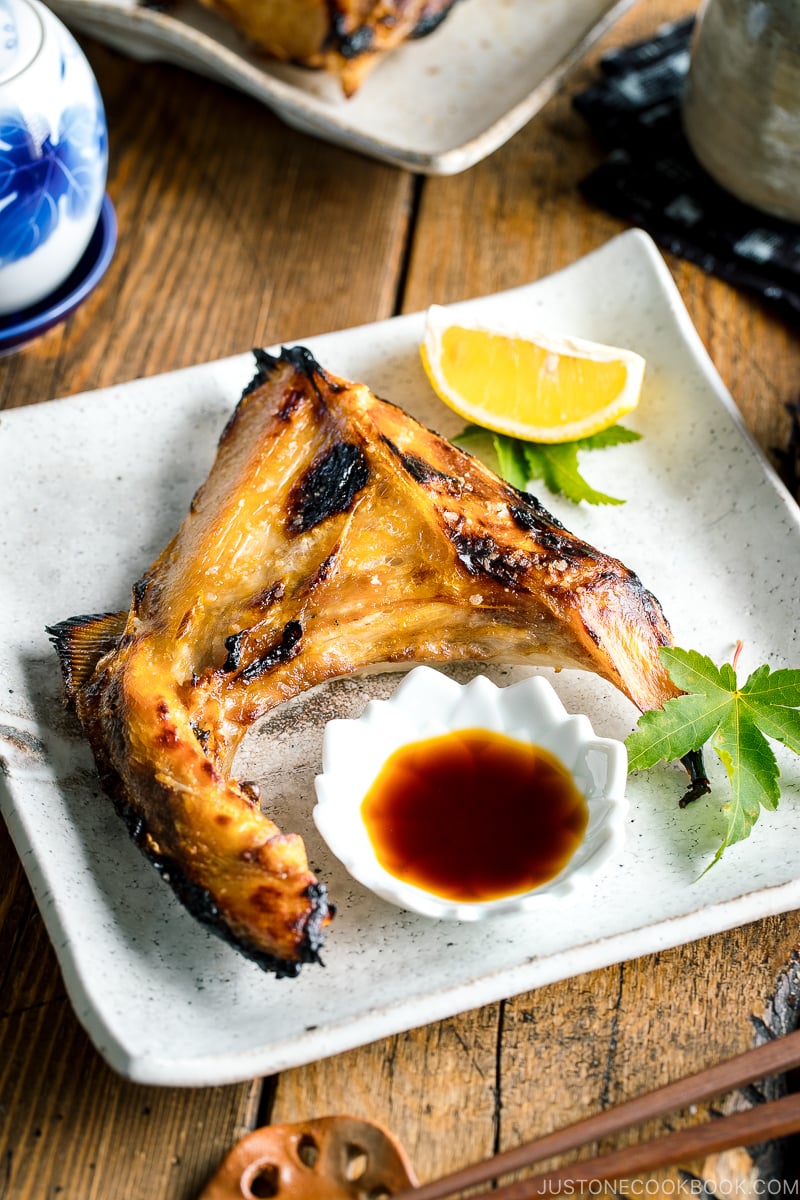
Where to Buy Hamachi Kama
Hamachi Kama is available at most Japanese markets. Check the freezer section as well for individual packs of frozen Hamachi Kama. Korean grocery stores also sell them, sometimes at a cheaper price than Japanese markets. If you have access to a fresh seafood market, you can ask if they have “Yellowtail Collar” available.
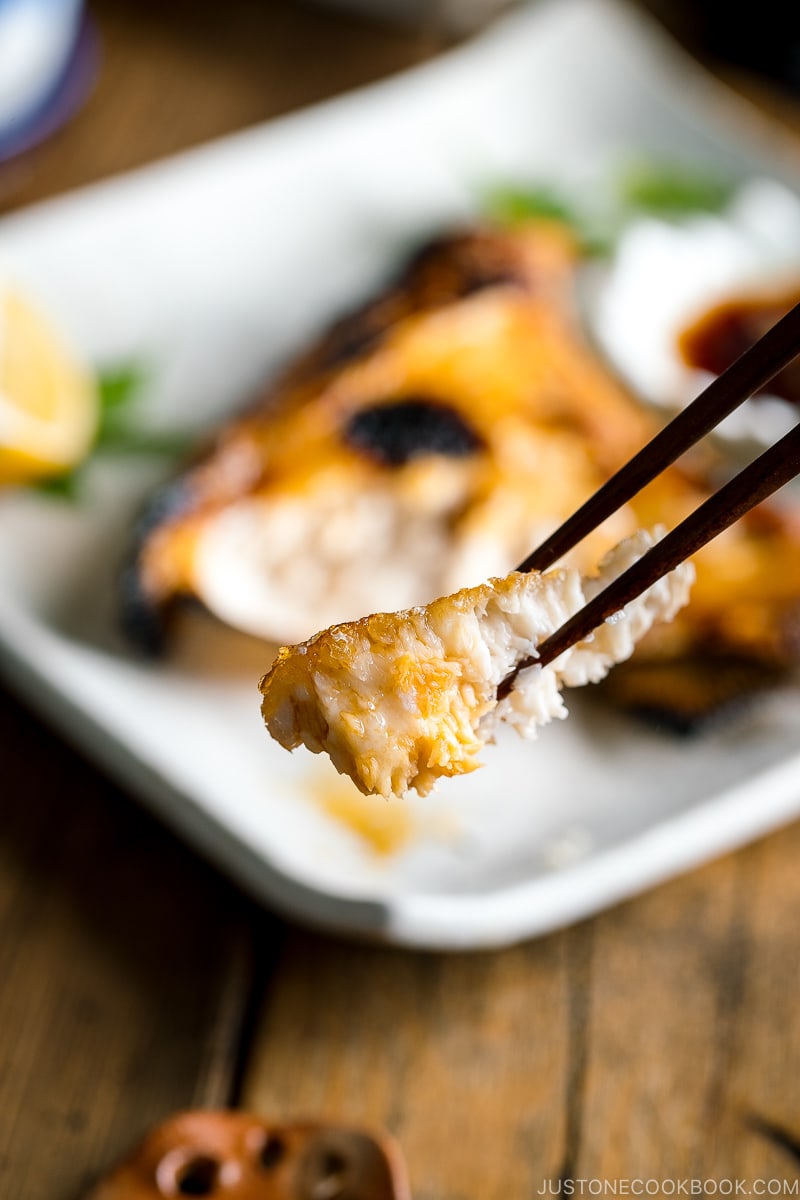
3 Reasons I Make Hamachi Kama at Home
- It’s fast – This recipe takes less than thirty minutes to make, which is perfect for busy days. There is always at least one package of Hamachi Kama in our freezer, which defrosts quickly under cold, running water.
- It’s easy – There is so much natural flavor in yellowtail that you don’t need much else to make it into a delicious meal. Before broiling the Hamachi Kama, brush the pan with a little oil to prevent sticking–that’s it! No need to season it because it will be served alongside a small dish of soy sauce and yuzu juice, like a simplified version of my homemade Ponzu Sauce.
- It saves time and money – There’s no doubt a traditional Japanese dish like this would cost more at a restaurant. It can be intimidating to try new recipes at home, especially if it involves fish or meat you haven’t cooked with. But once you see how simple and truly delicious it is, you may find yourself eating out less often.
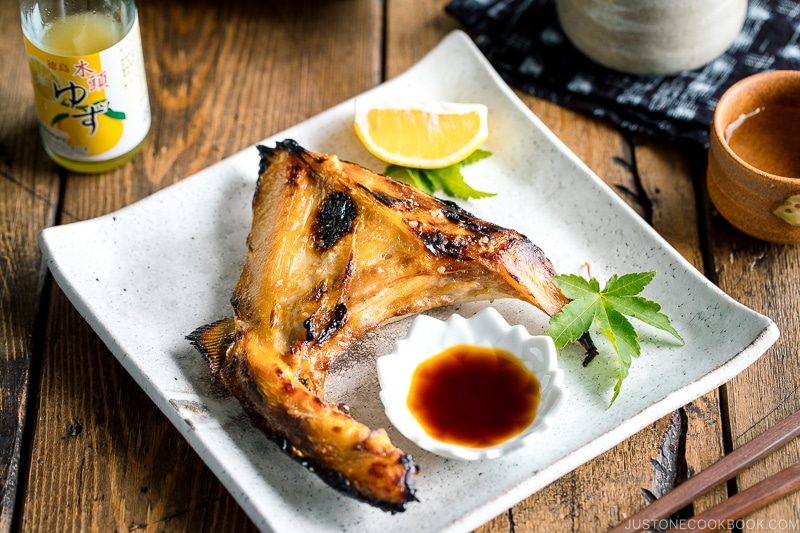
Wish to learn more about Japanese cooking? Sign up for our free newsletter to receive cooking tips & recipe updates! And stay in touch with me on Facebook, Pinterest, YouTube, and Instagram.
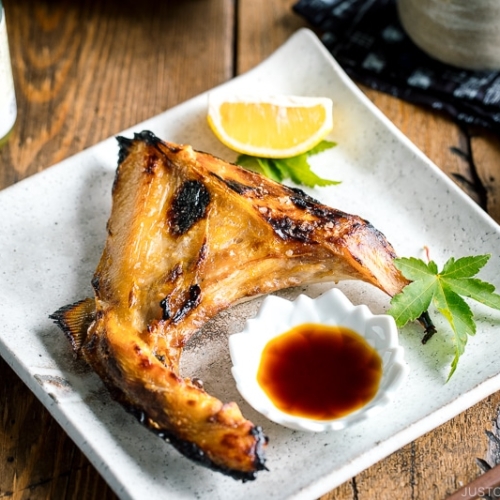
Hamachi Kama (Grilled Yellowtail Collar)
Ingredients
- 2 pieces hamachi kama (yellowtail collar) (11 oz, 312 g; available in Japanese markets)
- ⅛ tsp Diamond Crystal kosher salt (optional; skip if you plan to lightly dip your fish in yuzu-flavored soy sauce)
For Serving
- 1 Tbsp soy sauce
- ½ tsp yuzu juice (extract)
- 2 wedges lemon (optional)
Instructions
- Gather the ingredients. If the hamachi kama is frozen, thaw it beforehand by placing the fish, still in its vacuum-sealed package, in a bowl under a thin stream of cold running water for 20 minutes. Alternatively, you can put the fish in a bowl of iced water to defrost for 2 hours (takes longer but saves water), or in the refrigerator for 9 hours.

To Broil (Recommended)
- Preheat the broiler* with a rack placed about 6 inches (15 cm) away from the top heating element (in the center of the oven) for 5 minutes. When broiling, you don‘t control the temperature in the oven; instead, you control the distance between the broiler and the surface of the food. It‘s similar to using hotter and cooler zones on your grill. *Broiler setting: Low (450ºF/232ºC), Medium (500ºF/260ºC), and High (550ºF/288ºC). I usually use the Medium (6 inches away) or High (8 inches away) setting.
- Crinkle a sheet of aluminum foil and line the baking sheet. This helps prevent the fish skin from sticking to the foil.

- Place 2 pieces hamachi kama (yellowtail collar) on the foil, skin side down. Sprinkle ⅛ tsp Diamond Crystal kosher salt over the fish.

- Broil on Medium (500ºF/260°C) for 8–10 minutes until the surface is blistered and browned a bit. Please remember the cooking time varies depending on the thickness of the fish and the distance between the broiler and the food. You do not need to flip the fish. It should flake easily with chopsticks or a fork.

To Bake (optional)
- Preheat the oven to 425°F/218ºC with a rack placed in the middle and bake for 10–12 minutes, until the edges are crispy and the top is golden brown and opaque. A good rule of thumb to remember is to bake 5 minutes per ½ inch thickness (measure at the thickest part of the fish). You do not need to flip it. It should flake easily with chopsticks or a fork.
To Serve
- To make the yuzu-flavored soy sauce, mix 1 Tbsp soy sauce and ½ tsp yuzu juice (extract) together and divide into individual small dipping dishes. Serve the freshly grilled fish immediately on individual plates with the dipping sauce on the side and an optional 2 wedges lemon. Squeeze the lemon over the fish and dip the Hamachi Kama lightly in the sauce to eat. Enjoy!

To Store
- You can keep the leftovers in an airtight container and store it in the refrigerator for up to 2 days or in the freezer for a month.
Notes
Nutrition
Interested in More Japanese Grilled Fish Recipes?
Editor’s Note: The post was originally published on January 18, 2011. The images and content were updated in October 2020.
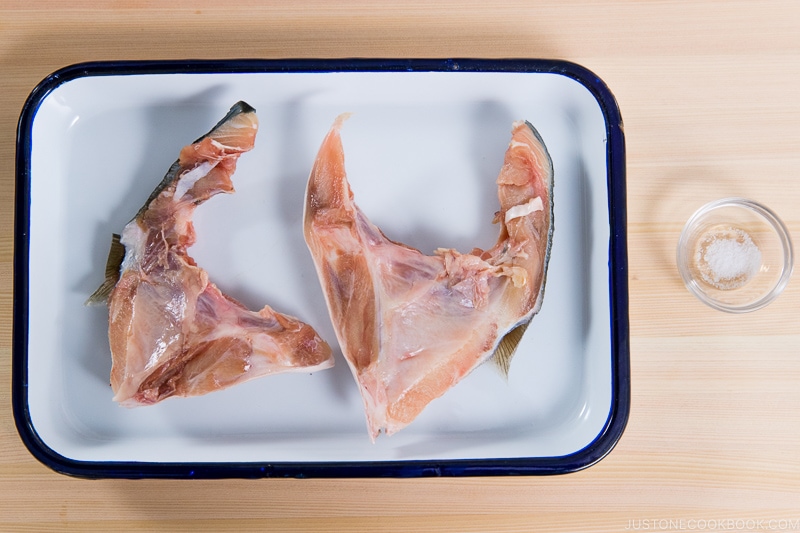
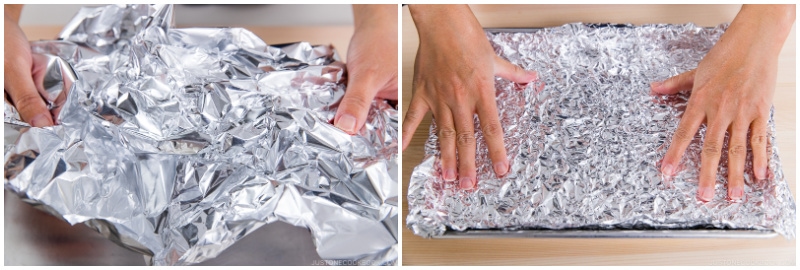
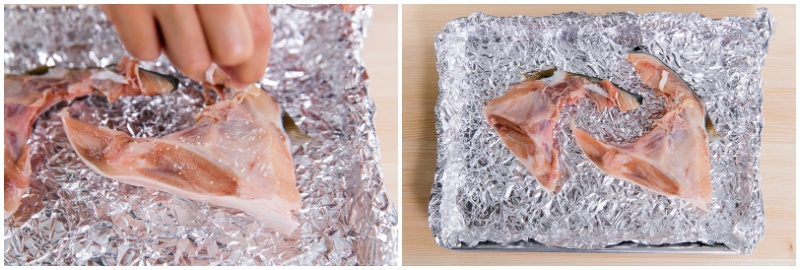
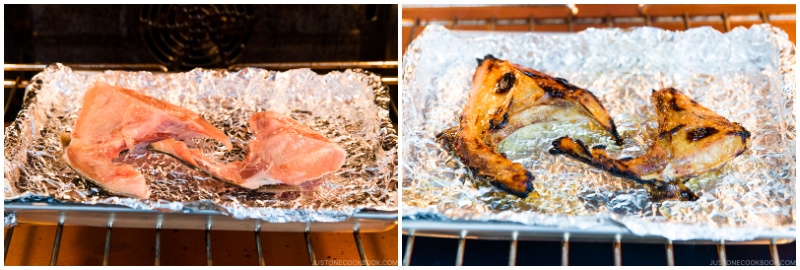
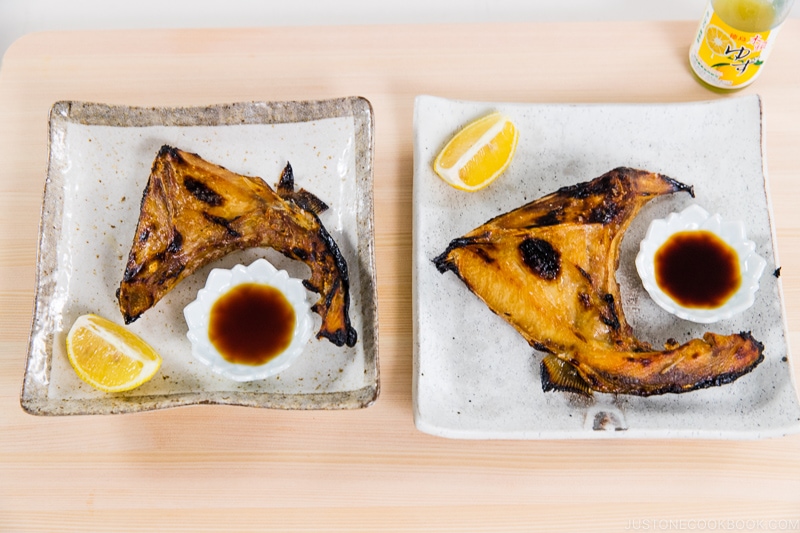

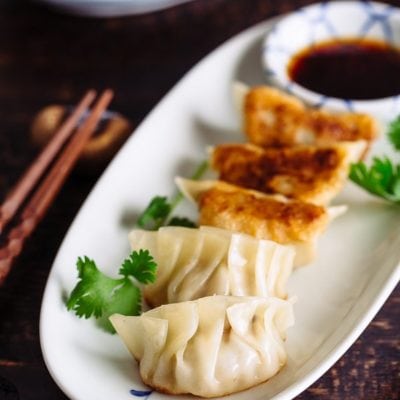
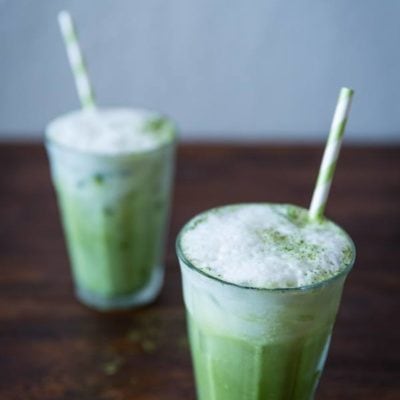

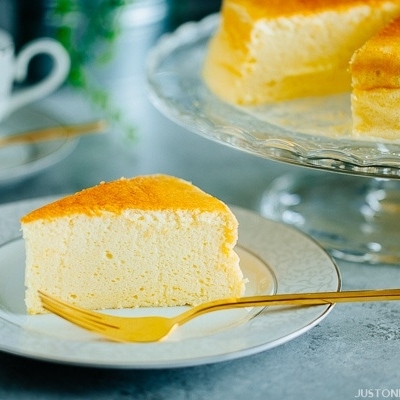
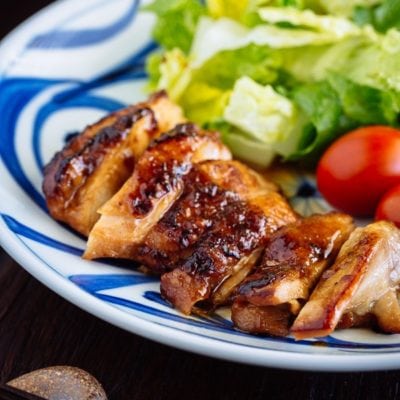
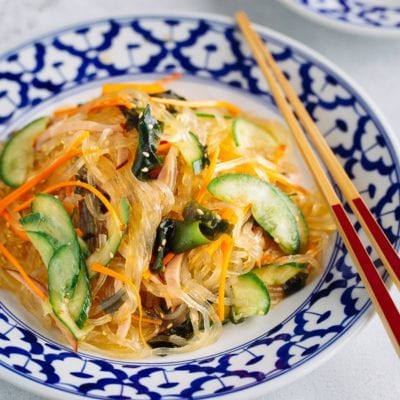
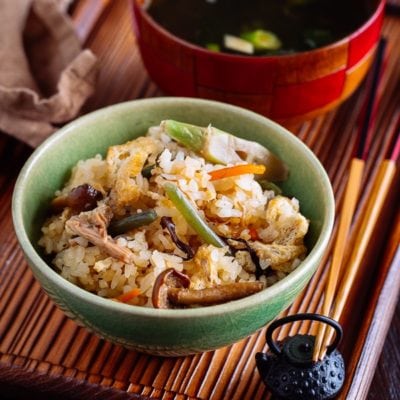
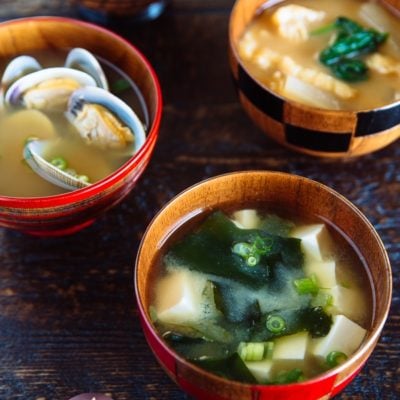

I tried this recipe with Black Cod collars and it was a hit! I was so easy and I liked your tip of placing the fish on crumpled foil.
Hi Amy! We are glad to hear you enjoyed Nami’s recipe and tip!
Thank you so much for trying Nami’s recipe and for your kind feedback. Happy Cooking! 🙂
Hands down, my favorite collar bone recipe.
I made this using ling cod collar bone.
so yumm yumm. 😋
Hi Katherine! Aww. We are so happy to hear you enjoyed Nami’s Hamachi Kama recipe!
Thank you so much for trying her recipe and for your kind feedback.
Happy Cooking!
I’ve had tuna Kama in Japan a few times. We can’t buy that here in The Netherlands. But I was shopping on the fresh market the other day and saw Kingfish collars. I quickly googled kingfish and of course bought a kilo. It’s dirt cheap too (Dutch people buy filets mainly). This recipe is fabulous. Super quick and simple and really good!
Hi Ina! Kingfish collars! Awesome!
Thank you very much for sharing your cooking experience with us!
We are sure many readers appreciate your comment. Thank you very much for trying Nami’s recipe and for your kind feedback.
Hi: Can I use air fryer? If so, what will be the temperature and cooking time?
Hi Alison! Thank you very much for reading Nami’s post and trying her recipe!
We have not tried this recipe using an air fryer before, but the Baking instructions in this recipe should work. Please feel free to shorten the baking time as need it.
We hope this helps!
This was so easy & so delicious. I have made this for breakfast and also for dinner. I served with grated daikon, spinach goma-ae and miso soup. The only question I have: is there a clever way to address the lingering odor in my house after I broil fish? Thank you!
Hi Heather! Thank you very much for trying Nami’s recipe! We are glad to hear you enjoyed the dish!
As for the cooking odor, The air purifier works great. Another tip is to open the window a bit and use a stove fan during the cooking, then clean the kitchen tool as soon as possible.
We hope this works for you!
Hi Heather, this is the “air purifier a’ natural” I use: Get a stainless fry pan hot on medium heat the pour in about 1/2 cup of vermouth and let it boil and steam off. It’s vinegar like base will clean the oils in the air that make the “just cooked fish” odor significantly less noticeable.
I’ve been ordering Hamachi Kama for many years at the restaurant. Then by chance, I saw some at the fish counter at Berkeley Bowl (supermarket with emphasis on fruit & veggies, I believe owned by a Japanese family). Bought 2 and came straight home to look up JOC website. I was cooking a few other dishes so I cut corners with this and put it on the greased baking sheet, skipped the foil. Worked out totally fine. I was going to cook it in the toaster oven but the distance between the heating elements and rack is 4 or 5 inches. Will try that next time. Will also salt it next time. I used Trader Joe’s yuzu hot sauce and soy sauce. Thank you for this great recipe!!
Hi Susan, Awesome! Nami and JOC team are so happy to hear you enjoyed Hamachi Kama!
Thank you very much for trying this recipe and sharing your cooking experience with us!😊
Tried this for the first time today – followed the cooking instructions exactly, it was amazing.
Will be keeping this in the freezer for future snacks.
Hi Daniel, Thank you very much for following Nami’s instructions and trying the recipe!
We are so happy to hear it turned out great and you enjoyed it. Thank you for your kind feedback!
My husband is Japanese and he goes fishing once in a while during tuna season. He gets blue fin tuna and only yellow tail very seldom. Can I use blue fin collar for the same recipe? Thanks for your input.
Hi Yola!
Wow! You are so lucky to taste it!
Sure, you can try this recipe.😊
Thank you so much for making your heirloom Japanese cuisine secrets available for all of us! All your recipes are easy to follow, picture perfect & taste better than in any NY Japanese restaurant I’ve been to! The Hamachi Kama is our family favorite among many others! 👏👏👏
Hi Celine!
Thank you very much for trying many of Nami’s recipes and for your kind feedback!
We are glad to hear you enjoyed them very much! Thank you!😊
Excellent ! The Hamachi was so delicious. The recipe was simple to follow. I heated the Broiler in my Convection Oven/Toaster for 3 minutes. Broiled the Himachi for 15 minutes. I didn’t have Yazu sauce and created a combination Light Soy Sauce and Lemon juice for the dipping sauce.
Hi Deanna!
We are so glad to hear you enjoyed this recipe!
Thank you for trying this recipe and for sharing your cooking experience with us.😊
Hi, Nami, Id like to try this with salmon collar (salmon kama). How would my choice of broiling or baking affect the finished dish? ie. what’s the difference between broiling and baking? I’d like my salmon to be smooth and not too dry. Also, by “broiler,” do yo mean an oven toaster or can we use the broil function in a full sized oven? Thanks.
Hi Angela,
Salmon Kama sounds excellent!😋
The broiler and bake difference are “Broiler” is only the top element heats up, and it can be broil function in a full-size oven. “Bake” is the bottom elements that heat up. The most oven toaster has both functions.
If you use Broiler” for this recipe, the fish will crisp on the top first, and the inside is just cooked through. So if you don’t like the crispy top, the “Bake” option may work better for your case. But please adjust your baking time according to your liking so it would not dry up your fish.😉
I hope this is helpful.
This is my favorite! I used to work at a Japanese restaurant and my boss would give me extra Hamachi kama to take home and cook. I very quickly became addicted!
I recently went to a Japanese market and found Buri kama; is that the same thing? Or does it have a different flavor? I’ve yet to try it out.
Hi Janine! I explained a bit about the difference in this post:
https://www.justonecookbook.com/yellowtail-teriyaki/
Hope you enjoy Buri Kama! 🙂
I bought four from a Japanese market and they were A-MA-ZING!! My kids (picky eaters) ate them up along with miso soup, salad, and rice.
Hi Karla! My kids LOVE Hamachi kama too! So glad you tried this at home (much cheaper than restaurants!). 🙂